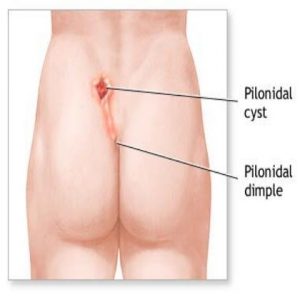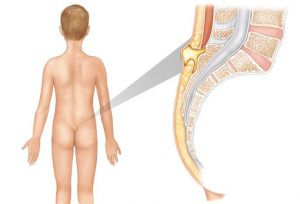Pilonidal cyst – symptoms – treatment
A pilonidal cyst or coccyx is a fistula (tunnel under the skin) where we have our so-called “tail”. From the outside it looks like an irritated pimple that can be small, medium or large in size – pus builds up inside.
Where is it coming from?
The spot is susceptible either due to hair growing internally or due to injury. Those born with a small dimple in the skin between the buttocks are most susceptible. During World War II, over 80,000 soldiers developed it. The cause was thought to be friction on the spot from driving jeeps on rough roads. Read more
Who most often develop coccyx cyst?
Men are more prone to developing coccyx cysts, especially younger men, as well as teenagers.
How has coccyx cyst been treated so far?
Until now, coccygeal cysts have been treated exclusively by surgery, which involved extensive excision (cutting of tissue) in the coccygeal area using laser, radiofrequency (RF) or a simple scalpel. Read more
What is the new technical treatment for coccyx cyst?
Things have been changed since 2012, when Dr. Alkiviadis Pappas first developed the SiLaT technique, which has now become widely accepted and tends to completely replace the old methods. This treatment differs from any other known method, since it is applied internally into the fistula with the help of a microcamera, without incisions and trauma, and ensures a success rate of over 95%. Read more
How is laser treatment applied?
SiLaT treatment is performed in a single session, using a painless surgical laser that allows the application of thermal energy to the inner walls of the fistula under local anaesthesia. The laser energy induces a controlled photothermal process with a strong antiseptic and mild inflammatory effect, resulting in rapid healing and closure of the fistula and definitive healing of the patient. Read more
What are the advantages of the SiLaT technique?
- Painless, bloodless and short-term treatment, lasting just 15 minutes
- Zero hospitalisation time, zero recovery costs and zero recovery time
- The area bears minimal trauma. This saves the patient from painful post-operative care, but also from the risk of exposure to infections or other complications
- Immediate return to a daily routine and activities
- Quick restoration of the area to its former, normal shape, as it was before the cyst
- The treatment is definitive and is accompanied by excellent aesthetic results
- Cases of recurrence are very rare, certainly much fewer comparing to other techniques
- The laser application to the greater tail area virtually eliminates the possibility of a new cyst or recurrence in this area


